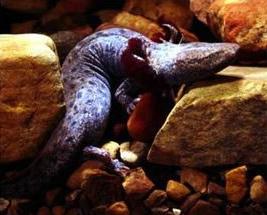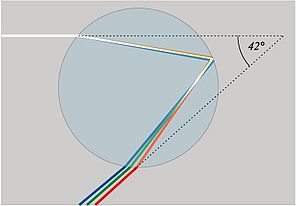Lake Ripples - Autumn 2009
LCC's E-News Bulletin
Substantial Mudpuppy Mortality Observed<br> During Lamoille River Sea Lamprey Treatment

The largest known population of mudpuppies on Lake Champlain was found recently in the Lamoille River when over 500 of the reclusive nocturnal amphibians were killed by chemicals added to the river to kill sea lamprey. It is unknown how many mudpuppies survived. Mudpuppies, particularly juveniles, are known to be susceptible to the lampricides and have been affected by many treatments around the lake. Fewer than 200 mudpuppies were killed in the largest prior die-off on the Ausable River.
Mudpuppies are large salamanders that never lose their external gills. They spend their entire lives in the water and populations are extremely difficult to survey. They feed principally on small invertebrates. They are long-lived and do not reproduce until they are about six years old. The first mudpuppy ever described by science came from Lake Champlain. In 2002 the state of Vermont’s Reptile and Amphibian Species Advisory Group recommended that mudpuppies be listed as threatened in Vermont, but the Agency of Natural Resources did not accept that recommendation. MORE
Lake Look ~ Rainbows

In early October, a rare meteorological phenomenon provided a treat for people lucky enough to be near the Crown Point Bridge. The waters north of the bridge became suffused with rainbow colors. Though everyone is familiar with rainbows arcing in the sky, seeing them sitting atop the water is much less common.
Rainbows form when the sun’s rays pass through water droplets and reflect back to an observer. Once the light enters the water droplet it bends, with different wavelengths varying in the degree to which they are bent. Reds bend 42 degrees while blues bend about 40 degrees. The light then bounces off the back of the water. Thus in order to see a rainbow, light must shine from behind the observer while water droplets are in the air in front of the observer.
In order to see the different colors of the rainbow, light must reflect off different water droplets. Those slightly higher in the atmosphere reflect reds, while the lowest droplets reflect blues. MORE
